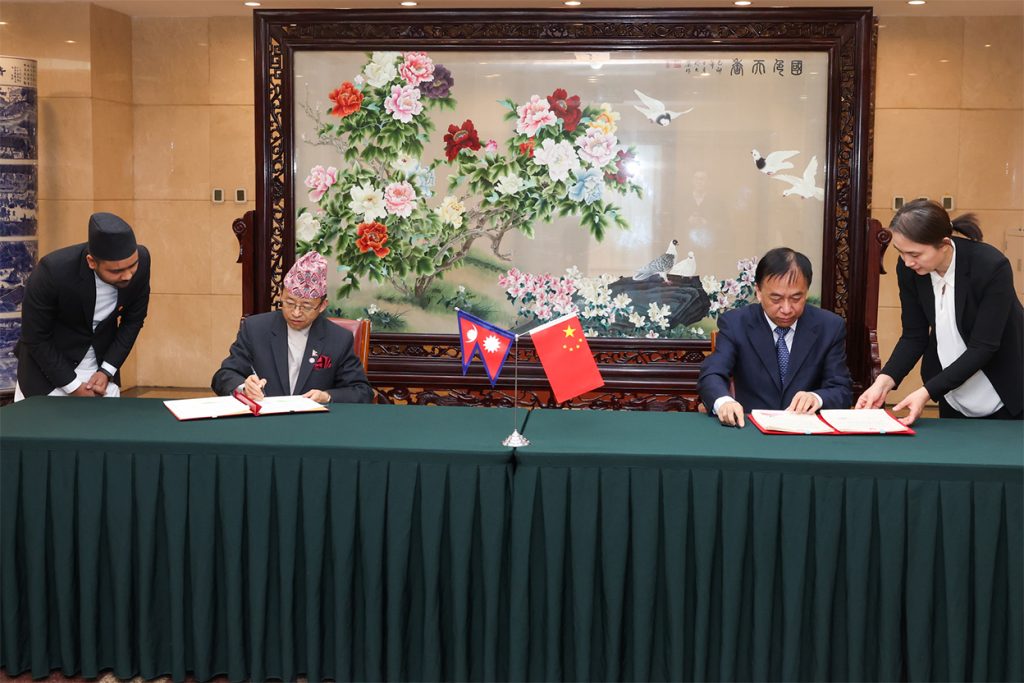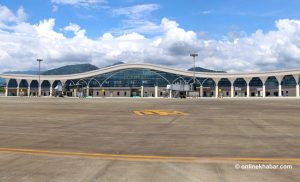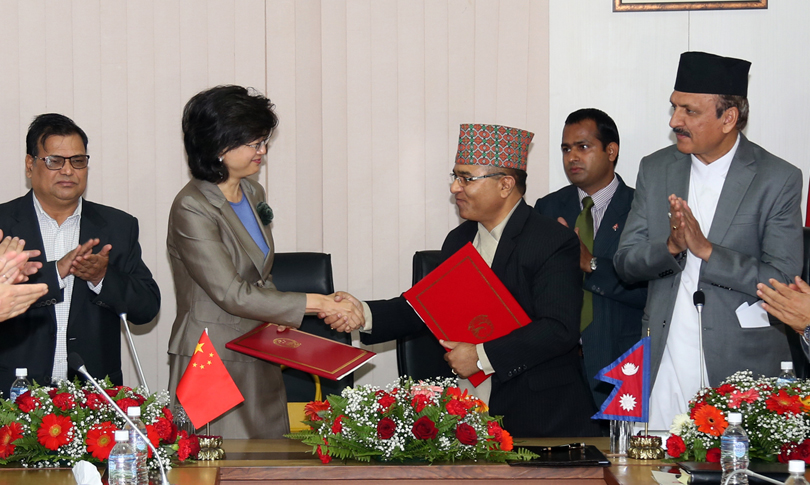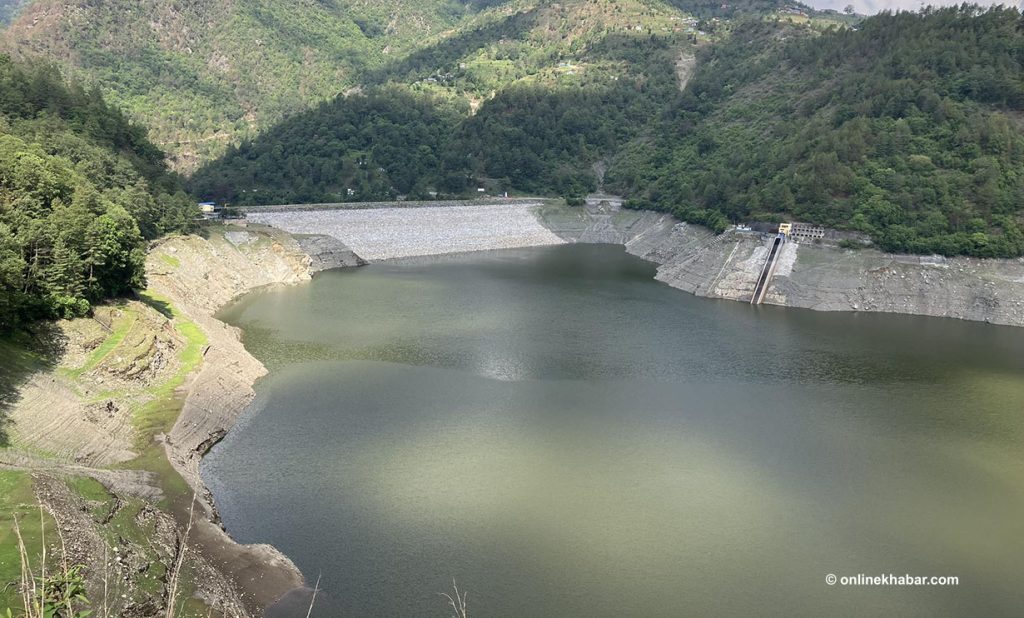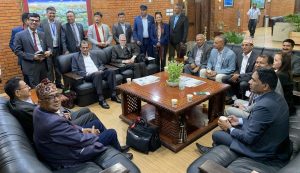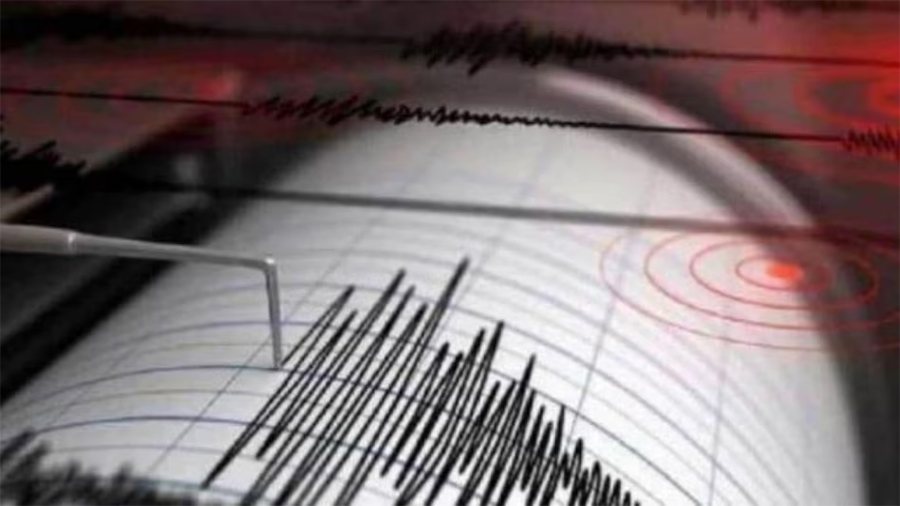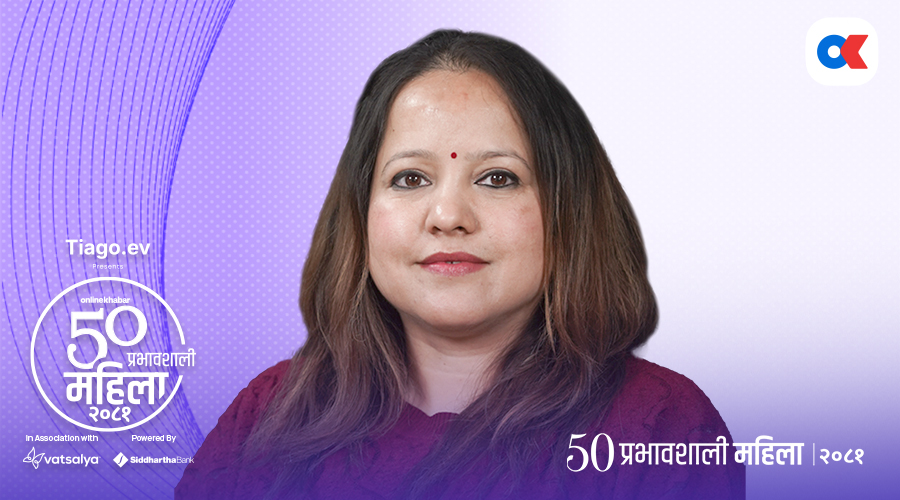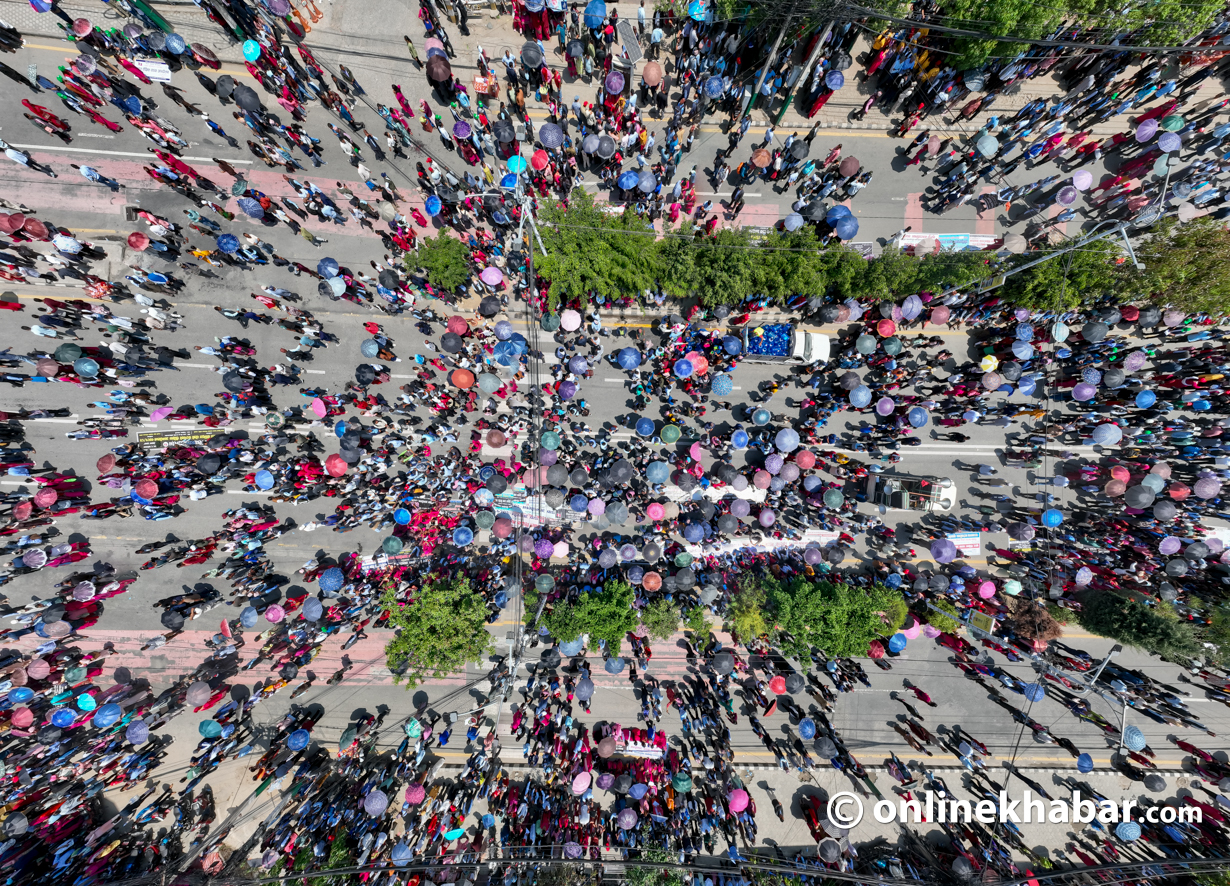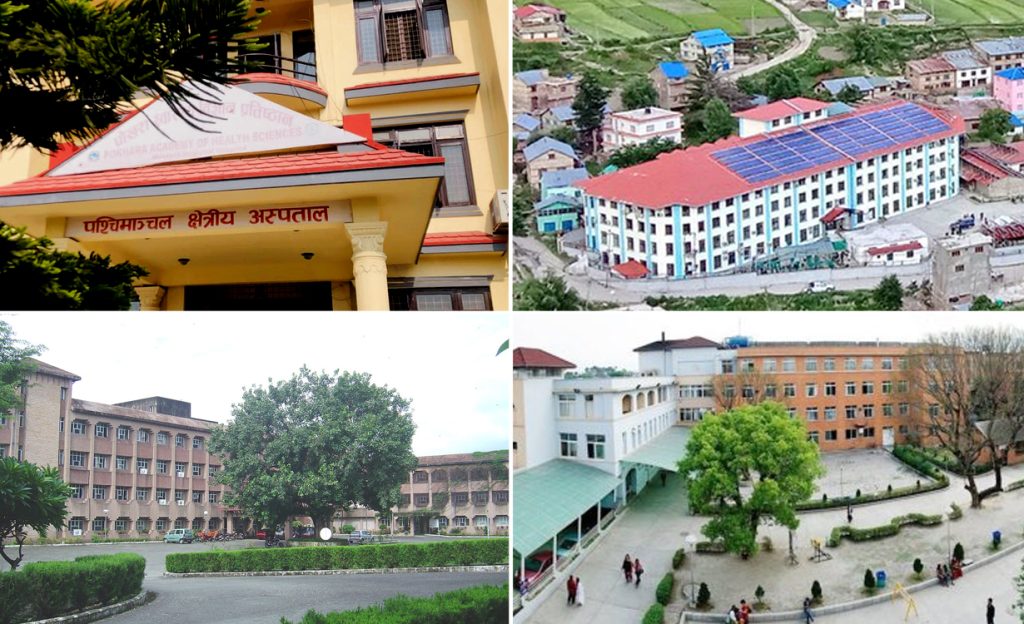The future of Chinese backed hydropower and the trans-Himalayan railway are at stake as Nepal’s prime minister makes his first visit to Beijing.

Nepal’s Energy Minister Barshaman Pun had an important message when he spoke to the Chinese media recently. His mission was to mitigate damage caused by negative press over the “cancellation” of a billion dollar contract awarded to a Chinese company to build one of Nepal’s biggest hydropower projects.
In an interview with Chinese state media, Pun clarified that the government had not cancelled the deal with the Chinese company. “The West Seti project is still in the hands of the China Three Gorges Company (CTGC) and we are ready to continue with CTGC if it is eager to develop this project,” Pun told Xinhua a few days after the government’s surprise announcement that the West Seti project would be developed with domestic funds, as it presented its annual budget in the last week of May.
Pun also took the opportunity to deliver another important message to those listening, “We are willing to develop the [Budhigandaki] project in cooperation with China either in the form of government to government cooperation mechanism or by taking soft loans from China.” The previous government had cancelled the deal with the Chinese company Gezhouba for this 1,200 MW hydropower project in November 2017.
The past few months have been tumultuous in the realm of energy cooperation between Nepal and its northern neighbour, thanks to the USD 2.5 billion Budhigandaki and the USD 1.8 billion West Seti projects. These are the country’s largest reservoir dams and biggest foreign investments. Both projects had been awarded to China’s government-backed companies, but the licence for Budhigandaki has been scrapped and that for West Seti is in limbo.
The hydropower dams are a major part of Nepal’s 10 year plan to develop 10,000 MW of power. Nepali officials have long hoped to secure investment from China to exploit its rich hydropower resources and ease the country’s chronic energy shortages.
The fate of these two projects are poised to make the coming weeks even more eventful, as Nepal’s prime minister KP Sharma Oli, portrayed as a ‘pro-Chinese’ communist in the Indian press is on his maiden visit to Beijing. Oli is the first Nepali prime minister in more than a decade to command a two-thirds majority in parliament.
Ahead of the visit, analysts in the Indian, Chinese and the Nepali press are scratching their heads to answer the question: Why did the pro-Beijing government, so obsessed with ‘prosperity’ and ‘development’, scrap multi-billion dollar deals with Chinese companies?
Bhaskar Koirala, director at the Nepal Institute of International and Strategic Studies, says what is happening with the projects is a result of ‘immature decision-making’ on the part of the government.
The Budhigandaki story

It all started in August 2016 when China’s Gezhouba Group, which is also working on the 60 MW Trishuli 3-A, said it was interested in developing the 1,200 MW Budhigandaki project. In a statement, the Chinese company said it had ample experience executing projects in China and across the world.
In June 2017, as then Prime Minister Pushpa Kamal Dahal ‘Prachanda’ prepared to hand over the reins of the government to his then coalition partner and Nepali Congress leader Sher Bahadur Deuba, the cabinet announced a surprise decision. It awarded the contract for the dam to China’s Gezhouba Group under the controversial engineering, procurement, construction, finance model, without following due process. The Chinese company would itself raise investment for the project and Nepal would pay the money back once construction was finished.
By November 2017 as the Budhigandaki’s turbulent waters settled after the monsoon, it was clear that the mega project would not be smooth sailing for the Chinese company. Faced with the possibility of an unprecedented defeat, the Deuba government took a string of decisions to ‘win the hearts of the people’. Deuba announced that the earthquake survivors would get an additional NPR 100,000 (USD 1,000), lowered the pension age to 65 years from 70 years and increased the number of public holidays. Kamal Thapa’s Energy Ministry, meanwhile, scrapped the licence awarded to Gezhouba and declared that the government would build the ‘project of national pride’ using its own resources—a message Thapa wanted to send to voters.
The West Seti story

China Three Gorges Corporation (CTG) received the licence to develop the West Seti dam in 2011 after the Australian firm SMEC, which held the permit for over a decade, failed to raise investment for the project. In November 2017, the developer inked a joint venture agreement with the Nepal Electricity Authority. As part of the deal, CTG was to have a 75% stake in the joint venture. However, CTG presented two further demands to the government before it was willing to seal the deal. The Chinese firm demanded that it be allowed to factor in pre-construction expenses made by the company so far as paid-up capital and that the project receive preferential power purchase rates from the Nepal Electricity Authority.
Government officials involved in the negotiations say that CTG does not want to develop West Seti and is just making excuses to pass the buck onto the Nepali government. CTG representatives are now asking the government to guarantee a 17% return on investment besides issuing a sovereign guarantee. If these conditions are not met, they say the project will not be feasible.
According to government sources, both sides were close to giving up on the whole agreement.
Two major announcements in one month
On May 8, Energy Minister Pun, after remaining silent on the Budhigandaki project for months, announced that his ministry will issue a global call for qualified companies to bid for the project. “We are not going to handover the project to any company without competition,” Pun said. He added that the contract will be awarded to the deserving company selected through competition.
On May 29, Finance Minister Yubaraj Khatiwada, in his budget speech, announced that the government will develop the West Seti project using its own resources. Although Khatiwada discussed with Oli that the West Seti project was on the verge of collapse, the Prime Minister was not expecting Khatiwada to effectively cancel the licence in his speech, that too ahead of his all-important China visit.
Government sources say that although Gezhouba continues to lobby for the Budhigandaki project and is likely to bid for the project once a global call is issued, CTG officials are heaving a sigh of relief that they are out of West Seti.
However, the two decisions have received a lot of negative press ahead of Prime Minister KP Oli’s visit to Beijing. Both governments have tried to calm anxieties. Chinese foreign ministry spokesperson Hua Chunying told reporters at a regular press conference that the West Seti deal was still on. “The report [on the cancellation of the West Seti deal] is not true,” Chinese foreign ministry spokesperson Hua Chunying said.
“This project is a commercial one. Relevant Chinese enterprises are conducting negotiations with the Nepalese side on the economic feasibility and other relevant matters,” she said.
China’s hydropower diplomacy comes to Nepal
Although the fate of the two projects remains unclear, there are other hydropower projects in Nepal which have Chinese investment. According to official figures, Chinese firms are currently working on around a dozen projects with installed capacity of around 850 MW.
Nepal has received considerable investment in the sector since the Chinese government prioritised hydropower in its 1999 ‘Going Out’ strategy. But Budhigandaki and West Seti projects are small fry in terms of size and investment for companies like CTG and Gezhouba, two of the biggest dam-makers in China.
However, NEA officials say several issues have emerged as more Chinese investment comes to Nepal. During informal conversations, they say that Chinese firms do not want to compete for licences, they want contracts in the form of ‘gifts’. Also, Chinese developers have failed to finish projects on time say Nepali officials — though developers blame delays on inconsistent government policies.
Why Chinese investment is crucial for Nepal
Most of Nepal’s hydropower projects built in the last few decades are smaller run-of-the-river types. Their generation capacity peaks during the monsoon and in the dry season they perform below par. That is why the government wants to build mega reservoir-type projects, like West Seti. China and India seem to be the only countries interested in building mega dams in the region, but they are also facing tough resistance from local activists and communities whose lands will be submerged by large reservoir projects.
Nepal’s former ambassador to Beijing Tanka Karki says that China is the best option for Nepal. “The Indians do not have the resources to build mega projects. Similarly, following the global economic crisis, Europe and the US are not in a position to invest in big projects,” he added.
Khadga Bahadur Bista, the former president of Nepal’s Independent Power Producers’ Association, agrees. “Chinese companies have a reputation to live up to. They do not want to hold up projects. They want to finish things on time.”
So KP Sharma Oli wants to convince Chinese companies that Nepal is open for investment.
Belt and Road initiative – will China tighten the belt?

Nepal’s Prime Minister is seeking support for other large infrastructure projects. Besides hydropower, the long awaited and much discussed Kerung-Kathmandu railway, under China’s Belt and Road Initiative (BRI), is topping the list. The Chinese government says the Tibet-Qinghai railway expansion is under way and will reach Nepal’s border in Kerung by 2020.
Both countries have agreed to further expand the railway to Kathmandu during earlier meetings. In April, a Chinese railway team conducted a preliminary survey with Nepal’s railways department to prepare for the Prime Minister’s visit.
Nepal’s prime minister has repeatedly promised to invest heavily in infrastructure to turn the poor country into a prosperous one, but unless both neighbouring China and India agree, there are slim chances that big investments will flow into the country. India is cautious about China’s growing presence in Nepal and has attempted to convince Nepal not to join the Belt and Road initiative.
However, there is speculation that a Nepal-India agreement to link Kathmandu with Delhi via rail, signed during India’s Prime minister Narendra Modi’s visit to Nepal last month, indicates that both neighbours are racing to link up with Kathmandu through the least disputed and shortest rail routes via Nepal.
Nepal’s government has big plans to build 4,000 kilometres of railways across the country, including tracks from the northern Tibetan plateau in China to the flood plains of the Ganga in India. This will allow Nepal to export goods to international markets.
Others fear Nepal will become vulnerable to its larger neighbours.
The article first appeared on The Third Pole. Read the original article.




